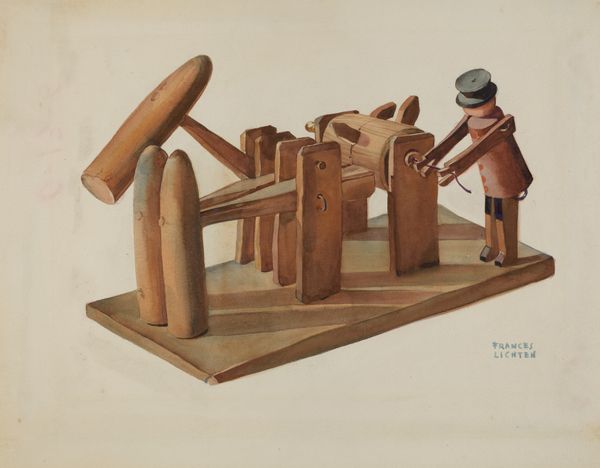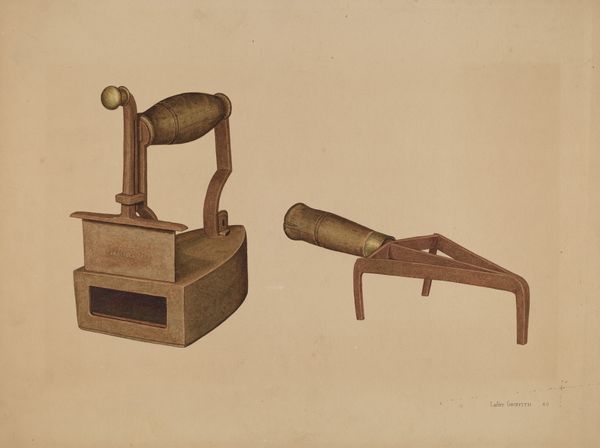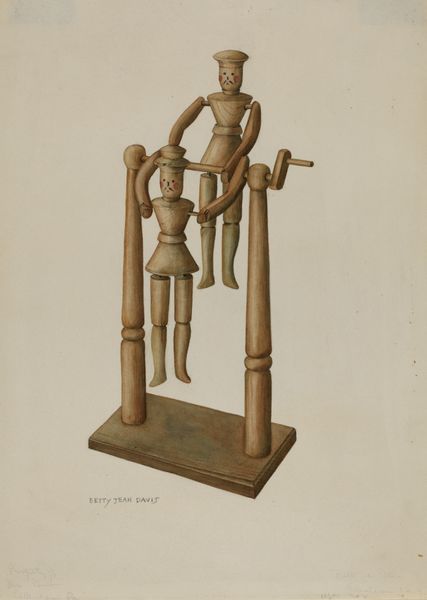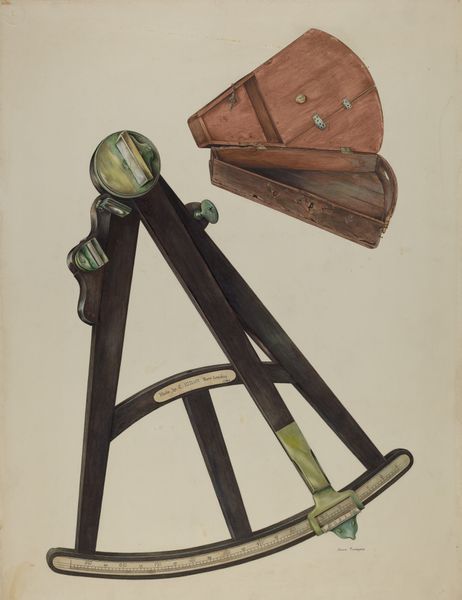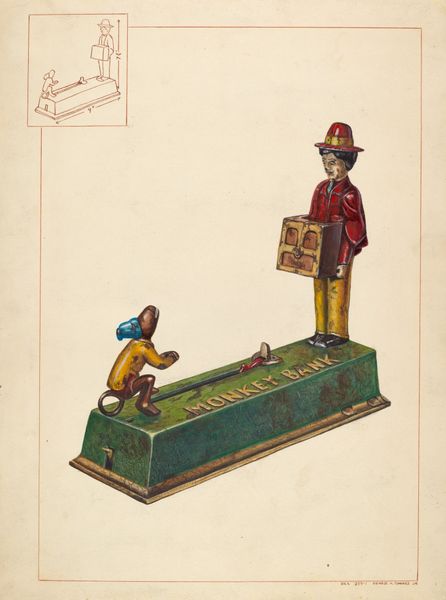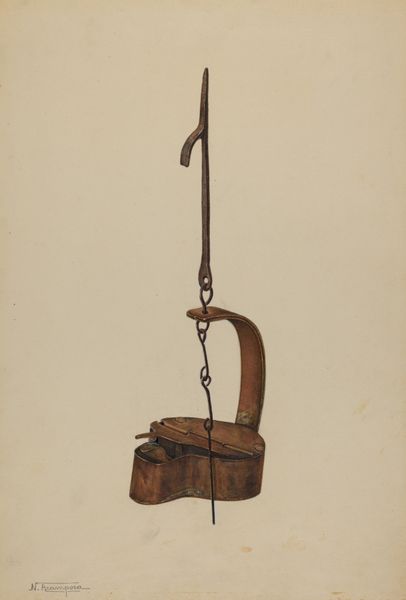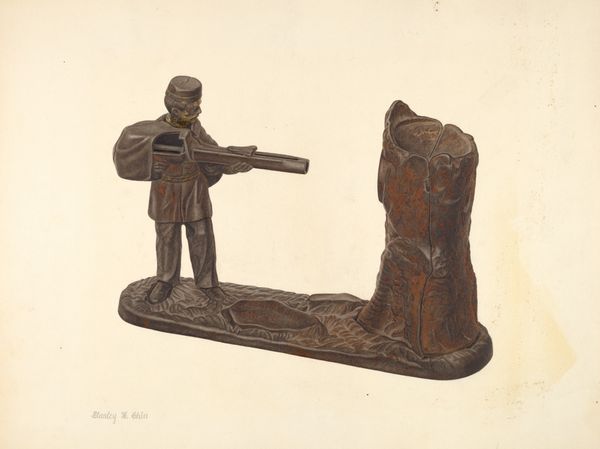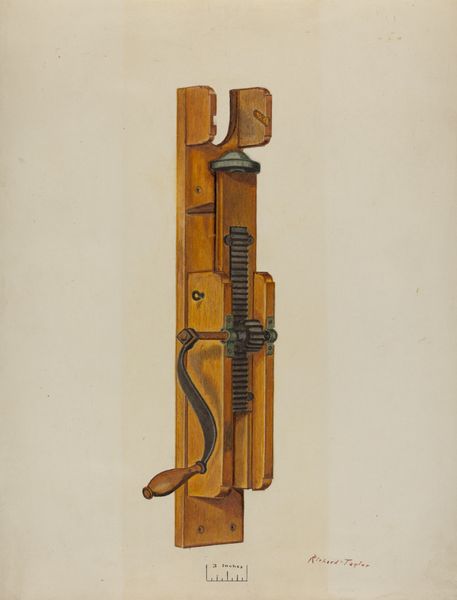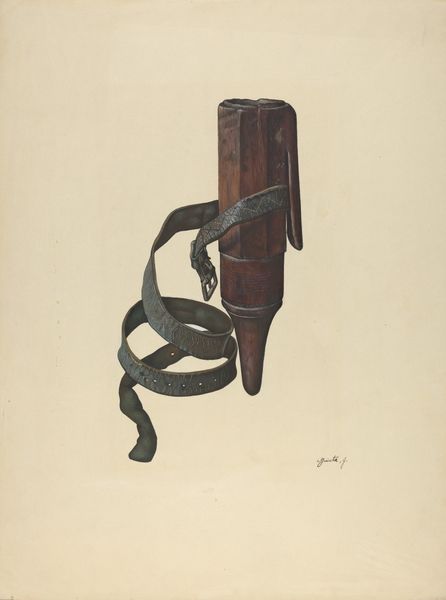
drawing, watercolor
#
drawing
#
landscape
#
watercolor
#
pencil drawing
#
genre-painting
#
academic-art
#
watercolor
#
realism
Dimensions: overall: 45.7 x 38 cm (18 x 14 15/16 in.)
Copyright: National Gallery of Art: CC0 1.0
Curator: Looking at Beverly Chichester's circa 1937 work, "Man Pumping Water," executed in watercolor and drawing, I am immediately struck by its subdued, almost melancholic palette. The composition, while simple, is quite evocative. Editor: Indeed. The muted earth tones contribute to a sense of labor and toil, wouldn't you agree? The focus here seems to be on depicting the ordinary, drawing our attention to the tools and apparatuses involved in a common chore. The rough-hewn quality of the wooden structures is evident. Curator: I find the linearity of the drawing to be of particular interest. Consider the precise rendering of the man's form, juxtaposed against the somewhat blockier representation of the pump. The dog’s presence introduces an interesting element—a life in relation to the mechanization. Editor: Yes, the interplay between man, animal, and machine—a co-dependence forged from necessity, perhaps. Note also how the work speaks to rural life and manual work of the period, emphasizing the functional aspects and unglamorous side of existence away from urban areas. I'm curious about the artist's choice to highlight this particular scene. Was it intended as documentation, social commentary, or something else entirely? Curator: Perhaps the interest lies precisely in the intersection. By isolating this mundane activity, Chichester elevates it to a symbolic plane. We have a microcosm of human effort, necessity, and the elemental connection to nature. The subdued colors further reinforce the sense of unadorned reality, focusing attention on essential form and narrative. Editor: I'd say it subtly brings to attention the inherent labor and the materials – wood and water – essential to daily life. The aesthetic simplicity, bordering on primitivism, amplifies this idea. It nudges us towards examining these processes with mindful contemplation. Curator: An apt summary, considering Chichester's careful use of line and muted coloration. The drawing is more than just a genre scene, becoming an austere meditation. Editor: Indeed, reflecting on the labor that sculpts our world—visible in every wood plank.
Comments
No comments
Be the first to comment and join the conversation on the ultimate creative platform.
